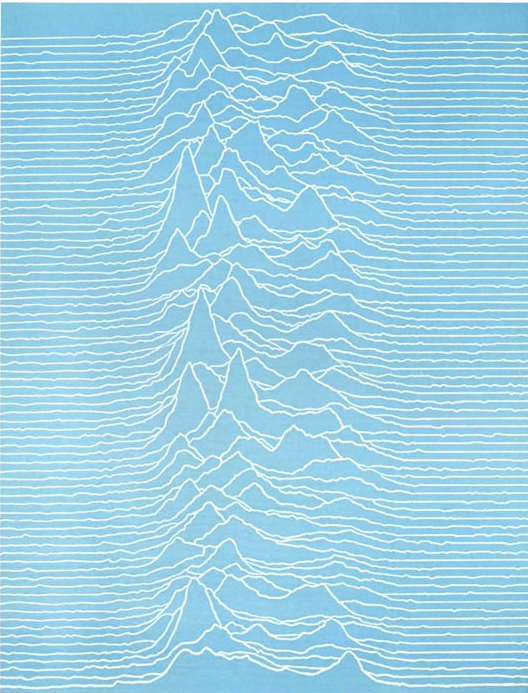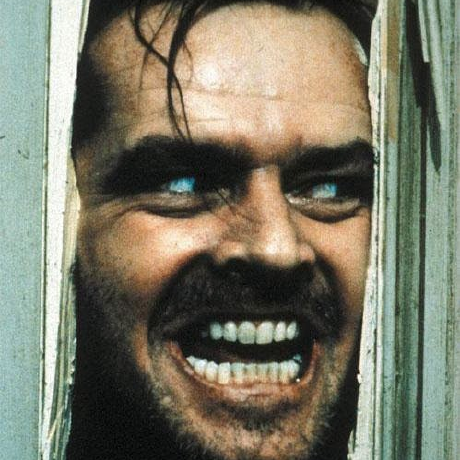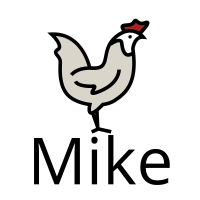Makes sense, cause double can represent way bigger numbers than integers.
Also, double can and does in fact represent integers exactly.
Only to 2^54. The amount of integers representable by a long is more. But it can and does represent every int value correctly
*long long, if we’re gonna be taking about C types. A long is commonly limited to 32 bits.
C is irrelevant because this post is about Java and in Java long is 64 bits.
you should never be using these types in c anyway,
(u?)int(8/16/32/64)_tare way more sane
Also because if you are dealing with a double, then you’re probably dealing with multiple, or doing math that may produce a double. So returning a double just saves some effort.
Yeah it makes sense to me. You can always cast it if you want an int that bad. Hell just wrap the whole function with your own if it means that much to you
(Not you, but like a hypothetical person)
deleted by creator
A double could also be NaN and any operations with NaN should return NaN afaik
A double can represent numbers up to ± 1.79769313486231570x10^308, or roughly 18 with 307 zeroes behind it. You can’t fit that into a long, or even 128 bits. Even though rounding huge doubles is pointless, since only the first dozen digits or so are saved, using any kind of Integer would lead to inconsistencies, and thus potentially bugs.
doubles can hold numbers way larger than even 64-bit ints
How does that work? Is it just because double uses more bits? I’d imagine for the same number of bits, you can store more ints than doubles (assuming you want the ints to be exact values).
No, it has an exponent component: https://en.m.wikipedia.org/wiki/Double-precision_floating-point_format
No, I get that. I’m sure the programming language design people know what they are doing. I just can’t grasp how a double (which has to use at least 1 bit to represent whether or not there is a fractional component) can possibly store more exact integer vales than an integer type of the same length (same number of bits).
It just seems to violate some law of information theory to my novice mind.
It doesn’t. A double is a 64 bit value while an integer is 32 bit. A long is a 64 bit signed integer which stores more exact integer numbers than a double.
Technically, a double stores most integers exactly ( up until a certain value ) and then approximations of integers of much larger sizes. A long stores all its integers exactly but cannot handle values nearly as large.
For most real world data ranges, they are both going to store integers exactly.
It doesn’t store more values bit for bit, but it can store larger values.
I don’t think that’s possible. Representing more exact ints means representing larger ints and vice versa. I’m ignoring signed vs. unsigned here as in theory both the double and int/long can be signed or unsigned.
Edit: ok, I take this back. I guess you can represent larger values as long as you are ok that they will be estimates. Ie, double of N (for some very large N) will equal double of N + 1.
deleted by creator
I agree with all that. But I’m talking about exact integer values as mentioned in the parent.
I just think this has to be true: count(exact integers that can be represented by a N bit floating point variable) < count(exact integers that can be represented by an N bit int type variable)
Oh now I get what you mean, and like others mentioned, yeah it’s more bits :)
I’m going to guess here (cause I feel this community is for learning)…
Integers have exactness. Doubles have range.
So ifMAX_INT + 1is possible, then~(MAX_INT + 1)is probably preferable to an overflow or silentMIN_INT.But
Math.ceilprobably expects a float, because it is dealing with decimals (or similar). If it was an int, rounding wouldn’t be required.
So ifMath.ceilreturned and integer, then it could parse a float larger than INT_MAX, which would overflow an int (so error, or overflow). Or just return a floatI would need to look into the exact difference of double vs integer to know, but a partially educated guess is that they are referring to Int32 vs double and not Int64, aka long. I did a small search and saw that double uses 32 bits for the whole numbers and the others for the decimal.
Yeah, that was my guess too. But that just means they could return a long (or whatever the 64 bit int equivalent in java is) instead of an int.
Okay, so I dug in a bit deeper. Doubles are standardized as a 64 bit bundle that is divided into 1 signed bit, 11 exponetioal bits and 52 bits for decimal. It’s quite interesting. As to how it works indepth, I probably will try to analyze a bit conversion if I can try something
It’s the same in the the standard c library, so Java is being consistent with a real programming language…
Implying java isn’t a real programming language. Smh my head.
Java has many abstractions that can be beneficial in certain circumstances. However, it forces a design principle that may not work best in every situation.
I.e. inheritance can be both unnatural for the programmer to think in, and is not representative of how data is stored and manipulated on a computer.
You don’t have to use inheritance with Java. In fact, in most cases it’s better that you don’t. Practically all of the Java standard library doesn’t require the use of inheritance, same with most modern libraries.
On the contrary, I think inheritance is a very natural way to think. However, that doesn’t translate into readable and easy to maintain code in the vast majority of the cases.
I am not sure what you mean by how it’s stored or manipulated on a computer. A garbage collected language like Java manages the memory for you. It doesn’t really care if your code is using inheritance or not. And unless you’re trying to squeeze the last drops of performance out of your code, the memory layout shouldn’t be on your mind.
Composition + Interfaces is love
People hating on Java because “inheritance” usually don’t know the difference between inheritance and polymorphism. Stuff like composition and dependency inversion is black magic to them.
We’re gate-keeping the most mainstream programming language now? Next you’ll say English isn’t a real language because it doesn’t have a native verb tense to express hearsay.
And it is not forced at all. Noone holds a gun to your head to write
extends. “Favor composition over inheritance” has been said as a mantra for at least a decade
Java is, of course, Turing Complete™️ but when you have to hide all the guns and knives in jdk.internal.misc.Unsafe something is clearly wrong.
Memory is an implementation detail. You are interested in solving problems, not pushing bytes around, unless that is the problem itself. In 99% of the cases though, you don’t need guns and knives, it’s not a US. school (sorry)
I do not like Java but this is a strange argument. The people that invented Java felt that most of the C language should be wrapped in unsafe.
Opinions can vary but saying Java is not a real language is evidence free name calling. One could just as easily say that any language that does not allow you to differentiate between safe and unsafe baheviour is incomplete and not a “real” language. It is not just the Java and C# people that may say this. As a C fan, I am sure you have heard Rust people scoff at C as a legacy language that was fine for its day but clearly outclassed now that the “real” languages have arrived. Are you any more correct than they are?
Nice ATM machine.
Smhmh my head
deleted by creator
Doubles have a much higher max value than ints, so if the method were to convert all doubles to ints they would not work for double values above 2^31-1.
(It would work, but any value over 2^31-1 passed to such a function would get clamped to 2^31-1)
So why not return a long or whatever the 64 bit int equivalent is?
To avoid a type conversion that might not be expected. Integer math in Java differs from floating point math.
Math.floor(10.6) / Math.floor(4.6) = 2.5 (double)
If floor returned a long, then
Math.floor(10.6) / Math.floor(4.6) = 2 (long)
If your entire code section is working with doubles, you might not like finding Math.floor() unexpectedly creating a condition for integer division and messing up your calculation. (Have fun debugging this if you’re not actively aware of this behavior).
Because even a long (64-bit int) is too small :)
A long can hold 2^64-1 = 1.84E19
A double can hold 1.79E308Double does some black magic with an exponent, and can hold absolutely massive numbers!
Double also has some situations that it defines as “infinity”, a concept that does not exist in long as far as I know (?)
But there’s really no point in flooring a double outside of the range where integers can be represented accurately, is there.
what about using two ints
What about two
int64_tyeah that would be pretty effective. could also go to three just to be safe
Make it four, just to be even
A BigDecimal?
Makes sense, how would you represent
floor(1e42) orceil(1e120)as integer? It would not fit into 32bit (unsigned) or 31bit (signed) integer. Not even into 64bit integer.BigInt (yeah, not native everywhere)
I feel this is worse than double though because it’s a library type rather than a basic type but I guess ceil and floor are also library functions unlike toInt
It would be kinda dumb to force everyone to keep casting back to a double, no? If the output were positive, should it have returned an unsigned integer as well?
intcoerces todoubleautomatically, without explicit castingThe CPU has to do real work to convert between float and int types. Returning an int type would just be giving the CPU extra work to do for no reason
I’m learning so much from this thread and I don’t even use Java
I think one of the main reason to use floor/ceilling is to predictably cast a double into int. This type signature kind of defeats this important purpose.
I don’t know this historical context of java, but possibly at that time, people see type more of a burden than a way to garentee correctness? (which is kind of still the case for many programmers, unfortunately.
You wouldn’t need floor/ceil for that. Casting a double to an int is already predictable as the java language spec explicitly says how to do it, so any JVM will do this the exact same way.
The floor/ceil functions are simply primitive math operations and they are meant to be used when doing floating point math.
All math functions return the same type as their input parameters, which makes sense. The only exception are those that are explicitly meant for converting between types.
“predictable” in the sense that people know how it works regardless what language they know.
I guess I mean “no surprise for the reader”, which is more “readability” than “predictability”
Is there any language that doesn’t just truncate when casting from a float to an int?
As far as I know, haskell do not allow coresion of float to int without specifying a method (floor, ceil, round, etc): https://hoogle.haskell.org/?hoogle=Float±%3E+Integer&scope=set%3Astackage
Agda seems to do the same: https://agda.github.io/agda-stdlib/Data.Float.Base.html
python is like this also. I don’t remember a language that returned ints
Python 2 returns a float, Python 3 returns an int iirc.
My God this is the most relevant meme I’ve ever seen
AFAIK most typed languages have this behaviour.
Because ints are way smaller. Over a certain value it would always fail.
Yea but at those values floating points can’t represent fractions anyway
Exactly. So if cast to int you’d either get an error or 0 for everything above a certain value.
Logic, in math, if you have a real and you round it, it’s always a real not an integer. If we follow your mind with abs(-1) of an integer it should return a unsigned and that makes no sense.
in math, if you have a real and you round it, it’s always a real not an integer.
No, that’s made up. Outside of very specific niche contexts the concept of a number having a single well-defined type isn’t relevant in math like it is in programming. The number 1 is almost always considered both an integer and a real number.
If we follow your mind with abs(-1) of an integer it should return a unsigned and that makes no sense.
How does that not make sense? abs is always a nonnegative integer value, why couldn’t it be an unsigned int?
I’m ok with that, but what I mean is that it makes no sense to change the type of the provided variable if in mathematics the type can be the same.
deleted by creator
deleted by creator
the programming language Java meaning coffee is perfect because, like coffee, it tastes like shit but gets the job done
I think you need to try some lighter-roasted, higher-quality beans which were roasted fairly recently and only grind them a day or so before you use them. There are also different brewing methods and coffee/water ratios that you can try.
I love and consume lots of coffee but I sincerely believe it only tastes good because I associate the taste with the boost it gives. Exactly like cigarettes taste tolerable, good even, when you smoke them regularly.
If you don’t know what you’re drinking, it’s probably dark roast. Dark roast is like charcoal compared to light roast.
The coffee most folks use (i.e. Folgers, Maxwell House) is low-quality coffee made in haste to keep the price low enough for folks to be willing to buy it. They only offer darker roasts because disguise the inferior nature of the beans, or rather the inferior process. The unfortunate truth is that good coffee costs more to process because it takes longer to process and most folks don’t want to spend that much on coffee. So, you get what you pay for.
It is shit, Austin
It’s like Java not having unsigned integers…
I like big numbers and I cannot tell a lie
Try Math.round. It’s been like ten years since I used Java, but I’m pretty sure it’s in there.
deleted by creator


















